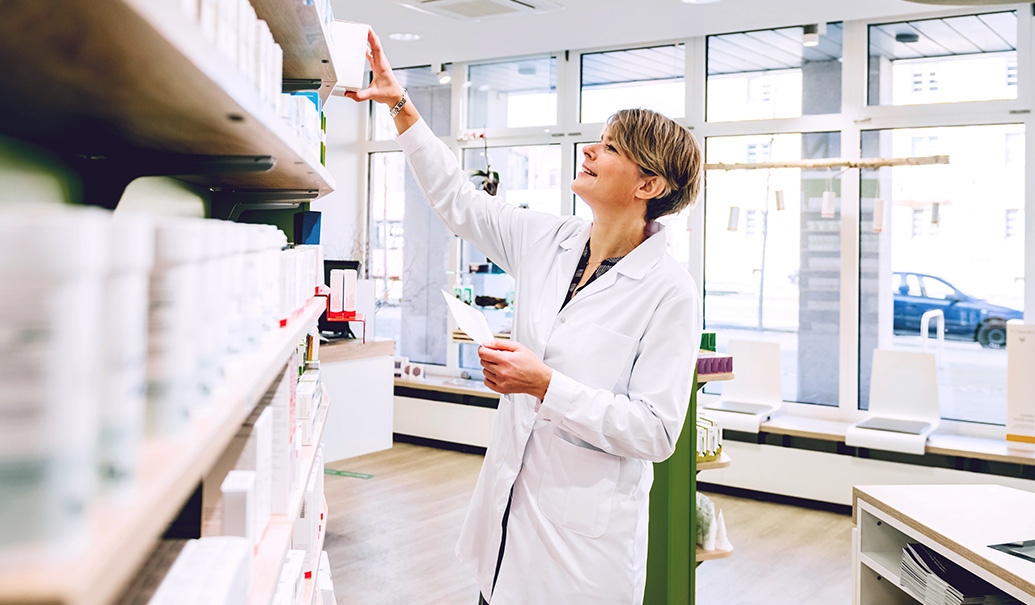The U.S. biosimilar landscape has continued to evolve. We’ve seen changes to what biosimilar products are commercially available as well as to the regulatory requirements that the products need to meet. Within the next five years, nearly 25 biosimilars are expected to launch in the U.S. against seven biologics targeting an annual revenue of nearly $15 billion. One interesting development is that some of these biosimilars will be self-administered and covered under the pharmacy benefit. Until now, all biosimilars that have launched in the U.S. have been infused therapies that are administered by physicians and billed under the medical benefit.
Administration site isn’t the only factor making the pharmacy benefit a whole different ball game for biosimilars. With the new billing channel, some healthcare ecosystem stakeholders gain additional control over product utilization. Under the pharmacy benefit, payers have more authority to determine which drugs stay on the formulary and which ones are removed. Due to market consolidation, three large organizations—CVS Caremark, OptumRx and Express Scripts—now control 75% of the pharmacy benefit managers (PBMs) business in the U.S. As a result, companies often face a win-big-or-lose-big situation during contracting agreements.
Unlike with the buy-and-bill channel, physicians have the least financial involvement and usually follow the payer formulary. Pharmacists’ influence will be driven by whether a biosimilar is interchangeable while patients’ brand loyalty can also have some influence in the pharmacy benefit channel. Let’s take a closer look at the market drivers that benefit biosimilar and originator manufacturers.
We’ve identified five market drivers that benefit biosimilars within the pharmacy benefit:
- Payers and PBMs are increasingly eager. ZS spoke with leaders from several payers and integrated delivery networks (IDNs) in 2021 to understand their thoughts on the biosimilars that are expected to come to market. We asked one leader from a large IDN that serves eight U.S. states about their perception of the upcoming biosimilars. They told us that, “With the second wave of biosimilar entries we will have more real-world experience … We know it’s not ‘biosame,’ it’s biosimilar. That question has been answered and we are comfortable now as this second wave comes out.” They also said that the “first biosimilar has a big advantage because latecomers need to make up the volume difference and this is difficult even for a three-month delay.”
When we asked a leader at one of the largest PBMs in the U.S. how this wave of biosimilar entries may be different they said, “Most of these products are being dispensed out of a specialty pharmacy that is vertically integrated with the payers … you will have more control.”
We spoke with another PBM leader about whether they anticipate patients, physicians and payers to push back on biosimilars. They said, “I don’t expect for there to be a lot of pushback from physicians just because these drugs are FDA approved, they have just been waiting for the patent litigation to expire ... [We] will have experience moving Remicade patients over to a biosimilar… All the data is from HUMIRA to biosimilar switching. There is no data from biosimilar-to-biosimilar switching. Once the payer selects a biosimilar, they are stuck. First biosimilar has the big advantage.”
There are multiple examples of in-market biosimilars replacing the reference products as the preferred option on payer formularies. More interestingly, payers recently have incentivized patients to switch to a biosimilar. One recent example is Cigna’s program that rewards patients with a $500 debit card for switching to an infliximab biosimilar.
- Regulators are enabling uptake. The U.S. market may adopt some of the steps that other countries have taken in creating a favorable environment for biosimilars. In the United Kingdom, for example, the NHS proactively laid out a special framework for the adoption of adalimumab biosimilars which was focused on keeping multiple treatment options and lower prices. Similarly, in Germany, the Federal Ministry of Health enabled biosimilar uptake by setting HCP prescription quotas.
Along similar lines, President Joe Biden recently issued several executive orders to the FDA, FTC and CMS to promote low cost options like biosimilars among U.S. patients. Most importantly, CMS was asked to prepare payment models for Medicaid and Medicare coverage of interchangeable products to support biosimilar utilization. The HHS also is considering removing the safe harbor for Medicare Part D drug rebates, meaning any rebates that manufacturers provide will invite prosecution under federal anti-kickback laws. Although this has been deferred multiple times, if implemented, it would weaken the “rebate wall,” one of the biggest factors deterring payers from selecting biosimilars.
- Physicians have become more comfortable with biosimilars. There are some indicators that prescribers in the U.S. will readily embrace pharmacy benefit biosimilars as they become available. First, physicians are now more familiar with the biosimilarity concept. That’s a big change since the first infliximab biosimilars reached the market in 2016. Second, several organizations like the American College of Rheumatology have encouraged healthcare providers to incorporate biosimilars into their treatment plans. Their comfort level also has increased for switching existing patients to biosimilars.
- Biosimilar manufacturers will need to find new ways to differentiate their products. As pharmacy benefit drugs are largely self-administered by the patients themselves, manufacturers can leverage various touchpoints for differentiation. Several biosimilar manufacturers are already working on this and plan to differentiate in terms of device (e.g., latex free, ergonomic design, needle size variation, etc.) or support services (patient support programs and patient assistance programs like financial assistance and co-pays, etc.). The motivation to differentiate is greater in a market like immunology where market stake and competition are high, pushing the manufacturers to play differently.
- Biosimilars’ interchangeable designation could increase the speed of patient switches. Under the pharmacy benefit, payers could use biosimilars’ interchangeable status to quickly switch patients. Quickly shifting large patient volumes away from reference products would offset the financial risk to payers from losing rebates. However, because interchangeability is only between a reference product and the biosimilar, this is expected to have minimal impact on the portion of the market that already shifted to another biosimilar. These dynamics will demand that all stakeholders think deeply and consider each scenario that emerges.
- Payers may prefer high rebates in the Medicare Part D coverage gap. In the Medicare Part D coverage gap, manufacturers—both reference product sponsors and biosimilars developers—must provide their products at a 70% discount. The remaining cost is covered by the patient (25%) and the health plan (5%). Often, the rebates that payers receive are far higher than the 5% they’ve paid, making it a significant revenue stream for them. This, in a way, can incentivize health plans to retain products with both high wholesale acquisition costs and high rebates over the biosimilars.
- Patients and prescribers value manufacturers’ innovations. The pharmacy benefit gives manufacturers an opportunity to showcase their innovations which could be valued by a segment of patients and prescribers. Such innovations could come in the form of convenient drug devices like Neulasta’s on-body injector and Enbrel’s auto-touch injector and improved formulations such as Humira’s less painful, high concentration formulation. These innovations do come with investment costs but the added advantage of securing the market can be a motivating factor for reference product sponsors.
- Prescription behavior in sensitive indications is less susceptible to change. Switching patients from reference products to biosimilars is expected to be more challenging in indications where patient stability is a concern. Switches are less likely in patients with irritable bowel syndrome, for example, due to an increased chance of a flareup. Another example is dermatological conditions that could cause patients to feel some social stigma due to possible changes in their appearance. In some U.S. states, physicians can choose to continue prescribing the reference product in such patient populations and may even use their DAW authority, barring even substitution to interchangeable products. Reference product sponsors can strive to maintain brand loyalty among these patients and physicians.
- Employers generally prefer products with rebates. Employers value rebates because they often become a revenue stream. Hence, they likely will continue to prefer a high wholesale acquisition cost, high rebate products. These rebates are often linked with volume meaning that reference products can offer the best value proposition based on their large existing volume of business.
- Unless given a reason, patients might not switch. Support services help patients to “stay” on their therapies, when clinically appropriate. Reference product sponsors offer patient support programs which most biosimilar manufacturers might not choose to offer. In pharmacy benefit products, several add-on services could be key influencers for patients. Services like copay support, benefit verification support, add-ons (including, dummy device, audio guide, ice packs, sharps disposal kit, and calendars and booklets) and on-call support transport services are all value-adds for patients to stay on their existing therapies.
The entry of pharmacy benefit biosimilar products will continue to attract attention and spur new strategies from both biosimilar manufacturers and reference product manufacturers. It’s still not clear how quickly biosimilars will be adopted in the pharmacy benefit. However, we expect that the timeline will be influenced by the decisions of the largest PBMs. One thing that’s certain is that payers and patients will have more choices.
Add insights to your inbox
We’ll send you content you’ll want to read – and put to use.
















